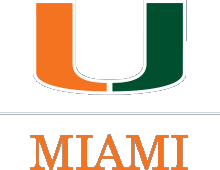

An innovative composite material for repairs can positively impact Cuba’s structural restoration efforts.
Known for its caught-in-a-time-capsule setting, replete with vintage cars and remnants of its colonial past, Cuba is also confronting an aging infrastructure that has been in disrepair for decades.
Crumbling buildings, roadways and sidewalks welcome a new set of U.S. tourists who are flocking to the island since relations between the United States and Cuba began warming due to the rapprochement of 2014.
In addition to new construction to satisfy the increasing demand of tourists and renewed business interests, rehabilitation of current structures is imperative.
Cuba has been making strides in restoration efforts, but it could benefit from more modern and innovative methods, say engineers with the University of Miami.
Antonio Nanni, professor and chair of the Department of Civil, Architectural and Environmental Engineering at the College of Engineering, and Diana Arboleda, a researcher and lecturer in the same department, say that an innovative repair technology—fabric-reinforced cementitious matrix (FRCM) composites—can greatly contribute to the restoration of Cuba’s historical architecture and infrastructure, preserving them for generations to come.
About the Photo
A man admires a 1955 Chevrolet parked in front of an apartment house suffering from disrepair. Photo credit: Peter E. Howard
Join the Conversation:
Follow on
Twitter:
UM College of Engineering, @UMCoEDean
University of
Miami, @univmiami
UM News, @univmiaminews
The Depth of the Disrepair

Cuba is a treasure trove of architectural styles spanning six centuries. Its capital city, Havana, is one of the most architecturally diverse cities in the world, with 16th-century colonial and baroque architecture on display alongside 20th-century Art Deco influences.
But over time, the beauty and grandeur of Cuba has faded as Havana’s historic buildings have decayed due to lack of maintenance, lack of funds and an aggressive climate. After Old Havana was made a World UNESCO heritage site in 1982, dozens of buildings were restored within the city, but these efforts are just a drop in the bucket. Far more restoration is required.
In addition, Arboleda says, Cuba’s infrastructure is crumbling. Most highways and streets are in dire need of safety improvements. Inefficient maintenance, advanced corrosion and seismic vulnerability of bridges make them a priority for repair and restoration.
Cuba has a strong history in engineering education and training, and restoration efforts have been undertaken using traditional techniques. One of the most commonly used external repair methods involves applying fiber-reinforced polymers (FRP), which act like new “skin” on the damaged structural element. The advantages of FRP include compatibility with the substrate, protection of the substrate and the fact that it is lightweight, durable and does not require formwork or being poured into a mold.
The FRP solution, however, also has some significant drawbacks, Arboleda says. It provides no fire protection, and while it is appropriate for infrastructure use, it is not suitable for historical restoration. Furthermore, it requires a level of skill to ensure proper installation, and there is some concern that it could be a toxic hazard to the installer.
Better Approaches to Structural Repair and Restoration

Alternative external repair systems are being increasingly used in Cuba, Arboleda notes. An alternative to FRP involves replacing the polymeric matrix—the organic resin that holds together the structural fibers—with a cementitious matrix such as ferrocement. Ferrocement consists of a metal mesh embedded in a mortar or paste. This system offers the same advantages as FRP, plus fire protection, suitability for historical restoration and an inorganic, non-toxic matrix.
But there is an even better external repair system for Cuba’s historic structures, Nanni says: a new class of composite materials known as fabric-reinforced cementitious matrix (FRCM). FRCM is considered the natural evolution of ferrocement, in which the metal mesh reinforcement, which is vulnerable to corrosion, is replaced with man-made and natural materials such as carbon, basalt, polyparaphenylene benzobisoxazole (PBO), hemp, flax, bamboo or glass fiber fabrics.
FRCM composites make ideal repair materials for concrete and masonry structures—and for historic restoration. These thin-section cementitious products can be applied to substrate surfaces prone to moisture vapor transmission, because the transmission of moisture vapor from a substrate surface does not typically compromise the bond between the FRCM and substrate. In addition, installation of FRCM is simple and can be performed by construction workers after minimal training.
Numerous commercial projects in Europe and the United States have already demonstrated the potential for FRCM composite applications for infrastructure strengthening. Examples include the repair of unreinforced concrete vault, the repair of concrete pedestals that support structural steel trestles and the strengthening of existing masonry and concrete structures.
Nanni and other researchers in the college are working on a proposal to submit to the Corporacion Andina de Fomento, which is the development bank of Latin America, for research and development of a restoration project in Cuba utilizing this innovative composite.
The research by Nanni and Arboleda shows that the use of FRCM composites as a repair technology can greatly benefit the restoration of Cuban historical architecture and infrastructure, and can positively impact the Cuban economy. Restoration is more important than ever, with Cuba’s thriving tourism industry bringing with it greater wear and tear on an already ailing transportation infrastructure, as well as many of the nation’s historical buildings in desperate need of restoration and repair.
Although Cuban authorities and the private sector are already addressing new construction, as well as the repair of Cuba's infrastructure and its centuries-old architectural heritage, the use of FRCM composites would make these efforts even more successful and durable. With widespread use of FRCM composites, Arboleda says, Cuba’s architectural treasures—and the roads and bridges that lead to them—can be enjoyed for centuries to come.
- ANDI FUENTES / UM News
